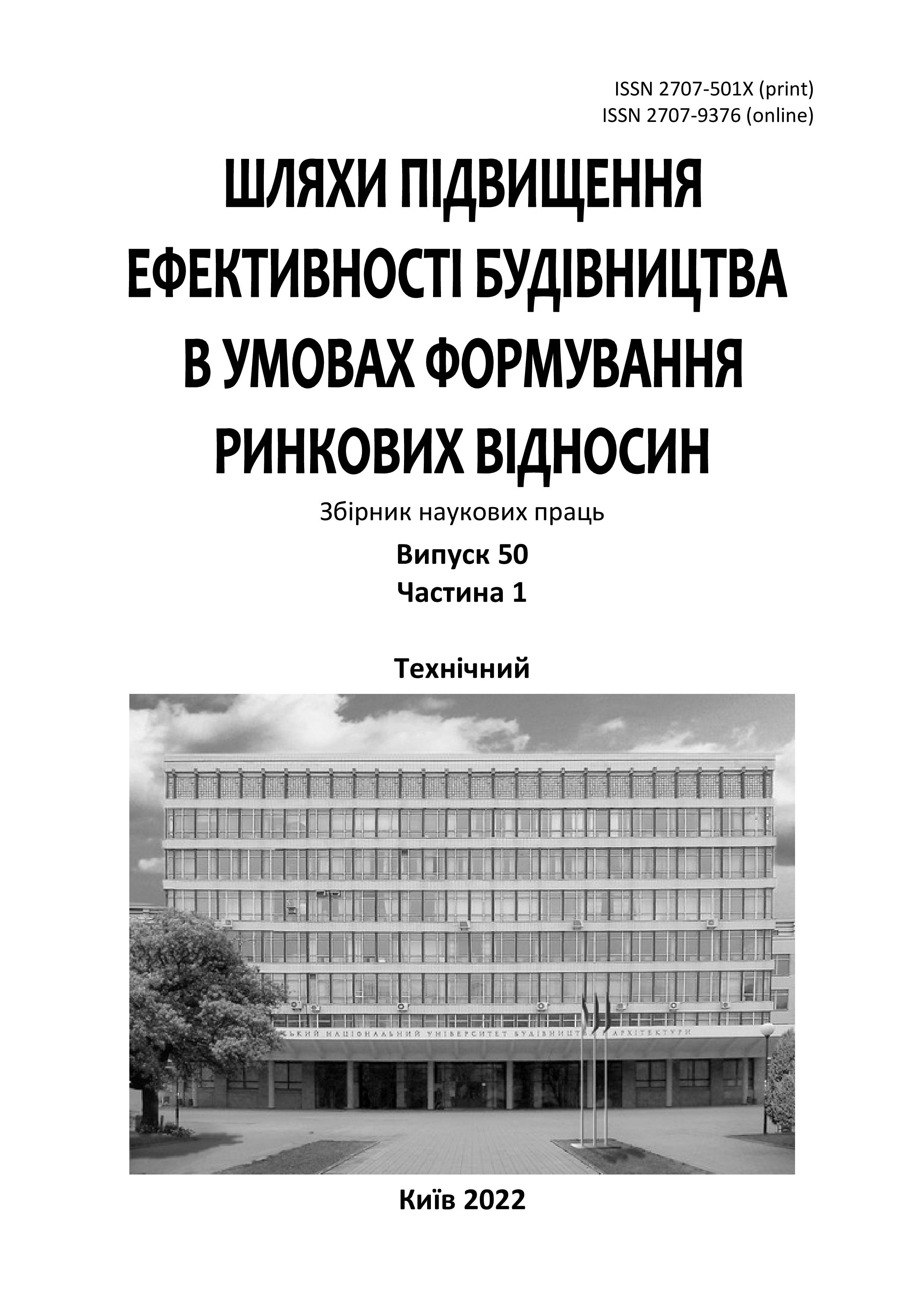Problems of integration of the opportunities of modern digital technologies for creating building information models (BIM) with building process information models (BPIM)
DOI:
https://doi.org/10.32347/2707-501x.2022.50(1).147-155Keywords:
general organizational and technological preparation, design and estimate documentation, investor-customer, construction siteAbstract
Recently, there has been a significant increase in the flow of publications, various information events and speeches at conferences related to the problems of development of information modeling technologies in construction (hereinafter - TIMB), especially - their definition (TIMB), place in the implementation of investment and construction projects (IBP). Despite the fact that the authors, at first glance, announce a wide range of topics, most of the works directly or indirectly consider the problems of creating and developing project documentation, based on the requirements and capabilities of modern project platforms. However, research data does not cover many practical issues related to the implementation of IMB technologies in the activities of organizations that conclude and execute subcontracts, as well as implement IBS, that is, contractors.
In this context, three aspects:
- a) specialists of the construction industry immersed themselves in the subject area, i.e. - a significant number of participants in the construction industry recognized the effectiveness of TIMB, without which further development of the country's investment and construction sector at a new qualitative level is impossible;
- b) but not everyone has figured it out yet, because the stereotype of the transition from pencil design to automated, computer-aided design (CAD) dominates, and the understanding of design processes based on parametric modeling, which allows you to reduce work time, avoid unnecessary operations, and improve project quality, is slow;
- c) at this stage, there is practically no connection between the almost unlimited possibilities provided by modern 3D design (modeling) platforms and the release of contractual documentation for the contract (design, estimate, tender, tender offers, and others).
Therefore, the problem of integrating the possibilities of creating an IMB of future projects with the information necessary to ensure the processes of construction sites, bypassing the office routine, in terms of logistics and when displaying the necessary information about the implementation of the UPS at all stages of its life cycle and for each of its (UPS) participants, needs more attention, which generally emphasizes the relevance and timeliness of the issue raised.
References
Інформаційне моделювання будівель: імперативи оптимізації вартості будівельно-експлуатаційного процесу. URL: http://www.infobud.com.ua/aktualnye-voprosy-sovremennogo-sostoyaniya-i-dalnejshego-razvitiya-stroitelnoj-otrasli/informacijne-modelyuvannya-budivel-imperativi-optimizaci%D1%97-vartosti-budivelno-ekspluatacijnogo-procesu-2/
ДБН А.2.2-3:2014 «Склад та зміст ПД на будівництво» URL: https://www.minregion.gov.ua/wp-content/uploads/2022/06/zmina-%E2%84%962-dbn-a.2.2-3_2014-1_removed.pdf
Про затвердження Порядку розроблення ПД на будівництво об'єктів. URL: https://zakon.rada.gov.ua/laws/show/z0651-11#Text
Титок В.В. Організаційно-технологічна модель створення будівельного об'єкта з позиції замовника. Будівельне виробництво, 2012, № 53. С. 40-45. URL: https://ndibv.kiev.ua/wp-content/uploads/2016/07/BV-53_Titok.pdf
ДСТУ ГОСТ 2.051:2006 Єдина система конструкторської документації. Електронні документи. Загальні положення замовника. URL: http://online.budstandart.com/ua/catalog/doc-page?id_doc=25845
Катёлкина А. Как реализовать BIM-модель по плану. URL: https://isicad.ru/ru/articles.php?article_num=19661. Назва з екрану.
Downloads
Published
How to Cite
Issue
Section
License

This work is licensed under a Creative Commons Attribution 4.0 International License.
Authors who publish with this journal agree to the following terms:
- Authors retain copyright and grant the journal right of first publication with the work simultaneously licensed under a Creative Commons Attribution License that allows others to share the work with an acknowledgement of the work's authorship and initial publication in this journal.
- Authors are able to enter into separate, additional contractual arrangements for the non-exclusive distribution of the journal's published version of the work (e.g., post it to an institutional repository or publish it in a book), with an acknowledgement of its initial publication in this journal.
- Authors are permitted and encouraged to post their work online (e.g., in institutional repositories or on their website) prior to and during the submission process, as it can lead to productive exchanges, as well as earlier and greater citation of published work (See The Effect of Open Access).

